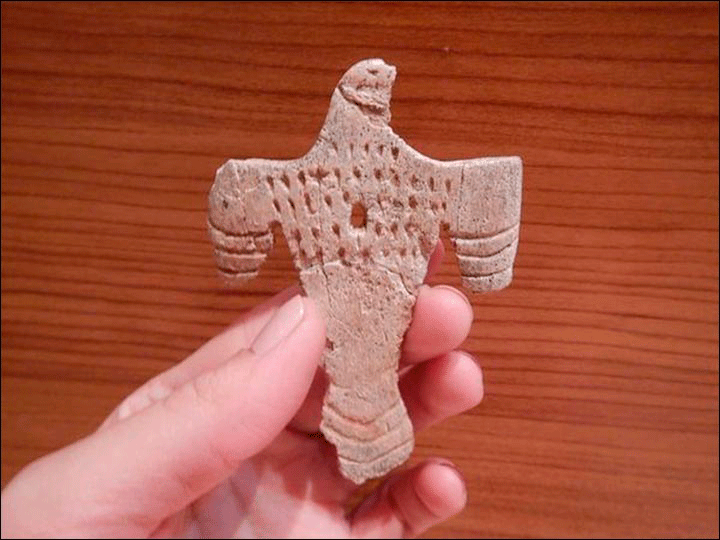
Ancient ornaments discovered during excavations in Russia are puzzling archaeologists as to the culture that made them. The items were discovered at a pre-historic burial site near the east bank of the Ob River in Novosibirsk. The site used to be a potato field.
Based to the iconography the items are similar to the Okunev or Samus culture, but the location does not match the former and the funeral rite the latter. On the grounds of funeral practice, archaeologists say it was probably the Krotovo culture.
The most impressive of the items is a figurine, perhaps a feather headdress, made of an unknown organic material. Although feather headgear is found in the Middle East about a millennium later they are not usually found in ancient Siberia, making the figurine a unique finding.
Other findings include a figurine of a bird made of bone. It was probably sewn onto clothes or worn as a kind of pendant. Also, four anthropomorphic figurines were found made of mammoth tusk, sandstone, birch burl and an unknown organic material. The figurines bear holes so they were probably sewn onto clothes archaeologists say.
Another impressive finding is a figurine of a moose, made of shale. It was found in the wall of an excavation hole rather than a burial, so archaeologists conclude that it might have been used for ritual purposes. Findings of other types include belt buckles and small sculptures.
Additionally, archaeologists found a late Bronze age settlement of Irmen culture and medieval burial from Turkik times.
The site probably dates to the end of the 3rd millennium BC, but stone implements found make specialists suspect that it could have been used in the 4th millennium BC as well. Excavations there are rather special since the natural layering of the soil was disturbed by a giant wave about 4 millennia ago, due to an earthquake. In modern times it was a potato field while debris from construction sites was dumped here. Also, silt was put on the site during dredging of the river.
The newly discovered items will be studied and sent to the St Petersburg Hermitage museum.





